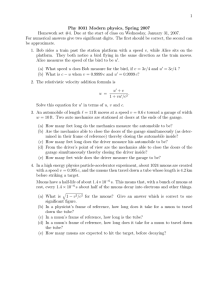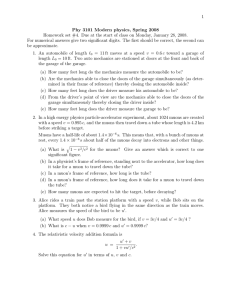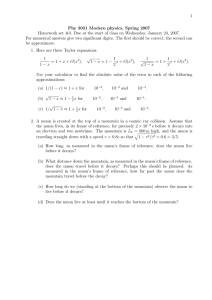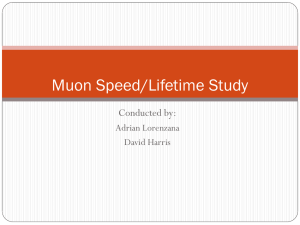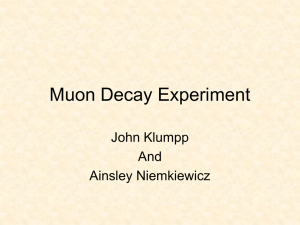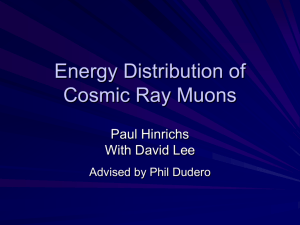1 Phy 3221 Due: April 13, 2011 Homework set # 11
advertisement
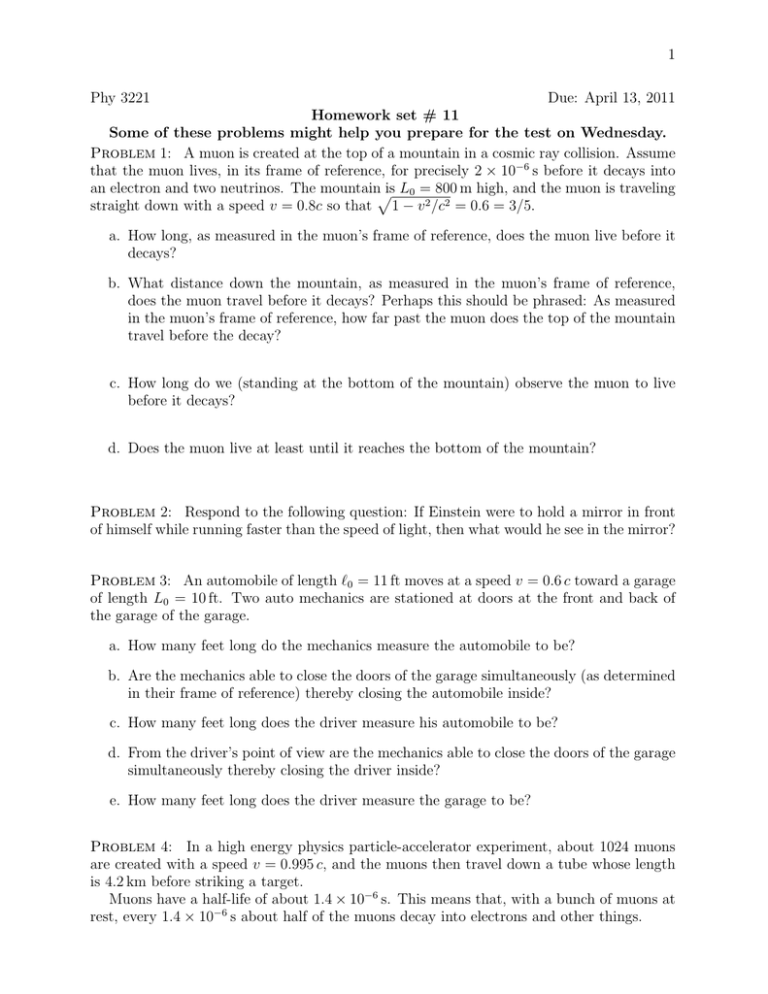
1 Phy 3221 Due: April 13, 2011 Homework set # 11 Some of these problems might help you prepare for the test on Wednesday. Problem 1: A muon is created at the top of a mountain in a cosmic ray collision. Assume that the muon lives, in its frame of reference, for precisely 2 × 10−6 s before it decays into an electron and two neutrinos. The mountainpis L0 = 800 m high, and the muon is traveling straight down with a speed v = 0.8c so that 1 − v 2 /c2 = 0.6 = 3/5. a. How long, as measured in the muon’s frame of reference, does the muon live before it decays? b. What distance down the mountain, as measured in the muon’s frame of reference, does the muon travel before it decays? Perhaps this should be phrased: As measured in the muon’s frame of reference, how far past the muon does the top of the mountain travel before the decay? c. How long do we (standing at the bottom of the mountain) observe the muon to live before it decays? d. Does the muon live at least until it reaches the bottom of the mountain? Problem 2: Respond to the following question: If Einstein were to hold a mirror in front of himself while running faster than the speed of light, then what would he see in the mirror? Problem 3: An automobile of length `0 = 11 ft moves at a speed v = 0.6 c toward a garage of length L0 = 10 ft. Two auto mechanics are stationed at doors at the front and back of the garage of the garage. a. How many feet long do the mechanics measure the automobile to be? b. Are the mechanics able to close the doors of the garage simultaneously (as determined in their frame of reference) thereby closing the automobile inside? c. How many feet long does the driver measure his automobile to be? d. From the driver’s point of view are the mechanics able to close the doors of the garage simultaneously thereby closing the driver inside? e. How many feet long does the driver measure the garage to be? Problem 4: In a high energy physics particle-accelerator experiment, about 1024 muons are created with a speed v = 0.995 c, and the muons then travel down a tube whose length is 4.2 km before striking a target. Muons have a half-life of about 1.4 × 10−6 s. This means that, with a bunch of muons at rest, every 1.4 × 10−6 s about half of the muons decay into electrons and other things. 2 a. What is figure. p 1 − v 2 /c2 for the muons? Give an answer which is correct to one significant b. In a physicist’s frame of reference, standing next to the accelerator, how long does it take for a muon to travel down the tube? c. In a muon’s frame of reference, how long is the tube? d. In a muon’s frame of reference, how long does it take for a muon to travel down the tube? e. How many muons are expected to hit the target, before decaying? Problem 5: Alice rides a train past the station platform with a speed v, while Bob sits on the platform. They both notice a bird flying in the same direction as the train moves. Alice measures the speed of the bird to be u0 . a. What speed u does Bob measure for the bird, if v = 3c/4 and u0 = 3c/4 ? b. What is c − u if v = 0.9999 c and u0 = 0.9999 c? Problem 6: One of the relativistic velocity addition formulas is u = u0 + v . 1 + vu0 /c2 Solve this equation for u0 in terms of u, v and c.
